승가시국
[한문]
[범어]산카샤(Sankassa) · 산카시아(Sankasia) · 산키사(Sankissa) 또는 산카시(Sankasy)
산카샤 위키백과, 스크랩 불기2564-06-07
(승가시국에서 넘어옴)
산카시아(Sankasia) · 산카샤(Sankassa) · 산키사(Sankissa) 또는 산카시(Sankasy)는
법을 설하고 33천에 불법을 편 후
다시 세상으로 내려올 때 하강한 곳으로,
인간과 하늘 세계를 잇는 상징적인 의미를 지닌 장소이다.
일찍이 많은 승원과 대탑이 건립되어
"아소카왕의 코끼리 도시"라 하기도 했다.
[ 4 대 성지]
룸비니
부다가야
사르나트
쿠시나가르

라지기르

슈라바스티

산카샤

바이살리
● From 한국위키 https://ko.wikipedia.org/wiki/
■ 추가적 불교사전 상세 참조사항
○ [pt op tr]
[#M_▶더보기|◀접기|
>>>>
>>>>
https://en.wikipedia.org/wiki/Sankassa
위키영문백과 스크랩 불기2564-06-07
Sankassa
From Wikipedia, the free encyclopedia
Jump to navigationJump to search
Sankissa
Sankisa
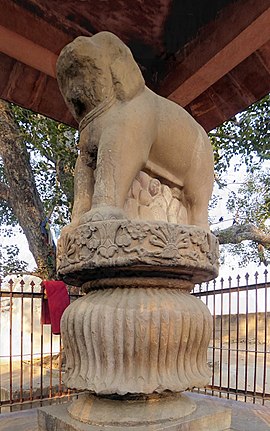
Elephant capital at Sankissa, one of the Pillars of Ashoka, 3rd century BCE
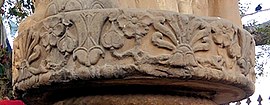
Detail of the abacus.

within IndiaShow map of IndiaShow map of Uttar Pradesh
Location
Farrukhabad district, Uttar Pradesh, India.
Coordinates
 27°20′02″N 79°16′16″
27°20′02″N 79°16′16″ECoordinates:
 27°20′02″N 79°16′16″E
27°20′02″N 79°16′16″EType Settlement
Pilgrimage to Buddha's Holy Sites

The Four Main Sites
Bodh Gaya
Kushinagar
Lumbini
Sarnath
Four Additional Sites
Rajgir
Sankassa
Shravasti
Vaishali
Other Sites
Amaravathi
Chandavaram
Devadaha
Gaya
Kapilavastu
Kesaria
Kosambi
Nalanda
Pataliputra
Pava
Varanasi
Later Sites
Ajanta Caves
Barabar Caves
Bharhut
Ellora Caves
Lalitgiri
Mathura
Pandavleni Caves
Piprahwa
Pushpagiri
Ratnagiri
Sanchi
Udayagiri
Vikramashila
Sankassa (also Sankasia, Sankissa and Sankasya) was an ancient city in India.
The city came into prominence at the time of Gautama Buddha.
According to a Buddhist source,
it was thirty leagues from Savatthi.[1]
After the Gautama Buddha's Mahaparinirvana (passing away)
king Ashoka developed this place
and installed one of his famous Pillars of Ashoka in the city,
from which the elephant capital survives.
He also built a stupa and a temple commemorating the visit of the Buddha.
This temple exists even today
and the ruins of the stupa are also present as a temple of Vishari Devi.
It is said that the name Visahari Devi is given to the mother of the Buddha.
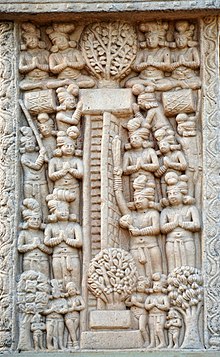
Descent of the Buddha from the Trayastrimsa Heaven at Sankissa.[2]
Currently it has ruins of old monasteries and Buddhist monuments.
It is rarely visited by pilgrims since it is difficult to go to,
and there are not many facilities.
After a long time
Alexander Cunningham (British) discovered the place in 1842.
Eighty-seven years later
Sir Anagarika Dharmapala (Sri Lanka) came here on spiritual quest.
In 1957 Panditha Madabawita Wijesoma Thero (Sri Lanka)
came to 'Sankissa' for few years
and started a Buddhist school (Wijesoma Widyalaya) for poor people.
Sankissa is now identified with Sankisa Basantapura on the north bank of the Ikkhumati river (Kalinadi),
between Kampil and Kannauj,
twenty-three miles west of Fatehgarh,
twenty-five south of Kaimganj
and forty-five north of Kannauj,
in Farrukhabad district of Uttar Pradesh state of India.
Contents
1Sankissa at the time of Ramayana
2Ancient Buddhist events at Sankassa
3Architecture
4Getting There
5References
6External links
Sankissa at the time of Ramayana[edit]
It was known as Sankasya Nagar
and was ruled by king Kushadhwaja,
was a younger brother of Janaka,
the father of Sita,
the heroine of Ramayana and wife of Lord Rama.
Once Sudhanva, supposedly an evil king of Sankasya Nagar,
demands the hand of Sita from Janaka.
In a war that ensues,
Janaka defeats and perhaps kills Sudhanva.
He bestows the kingdom of Sankasya to Kushadhwaja.
Ancient Buddhist events at Sankassa[edit]
Sankissa received its fame
from statements and claims recorded in the ancient commentaries
to the Tipitaka.
However, in the Tipitaka itself
the events that are supposed to have occurred at Sankissa
are not mentioned at all.
It was at Sankissa
that (according to the commentaries) the Buddha returned to earth,
after preaching the Abhidhamma Pitaka in Tavatimsa,
following the performance of the Twin Miracle under the Gandamba tree.
As the time approached for the Buddha to leave Távatimsa,
Moggallana (Anuruddha, according to Sutta Nipāta Commentary ii 570[3]) announced his coming return
to the multitude,
who had been waiting at Savatthi,
fed by Culla Anathapindika,
while Moggallana expounded the Dhamma.
They then made their way to Sankissa.
The descent of the Buddha took place on the day of the Mahapavarana festival.
Sakka provides three ladders for the Buddha's descent from Sineru to the earth:
on the right was a ladder of gold for the gods;
on the left a silver ladder for Maha Brahma and his retinue;
and in the middle a ladder of jewels for the Buddha.
The assembled people covered the earth for thirty leagues round.
There was a clear view of the nine Brahma worlds above and of Avici (a hell) below.
The Buddha was accompanied by Pañcasikha, Mátali, Mahá Brahmá and Suyáma.
Sariputta was the first to welcome him (followed by Uppalavanna,[4]
and the Buddha preached the Law,
starting with what was within the comprehension even of a puthujjana,
and ending with what only a Buddha could understand.
On this occasion
was preached the Parosahassa Játaka
to proclaim to the multitude the unparalleled wisdom of Sáriputta.[1][4]
It is said that the Buddha's descent to Sankissa had provided opportunity for Moggallána
to show his eminence in iddhi,
Anuruddha in dibbacakkhu, and Punna in skill in preaching,
and the Buddha wished to give Sariputta a chance of shining in his wisdom.[1][4][5][6]
He therefore asked of Sáriputta questions which no one else could answer.
The opening words of the Sáriputta Sutta are supposed to refer to this descent from Tusita.
The site of the city gate of Sankissa is one of the "unchangeable" spots of the world (avijahitatthanam).
All Buddhas descend at that spot to the world of men after preaching the Abhidhamma.[7][8]
From Sankissa the Buddha went to Jetavana.[9]
 https://upload.wikimedia.org/wikipedia/commons/thumb/2/2c/Bharhut_Ajatasattu_Pillar_-_Descent_From_Tavatimsa.jpg/762px-Bharhut_Ajatasattu_Pillar_-_Descent_From_Tavatimsa.jpg
https://upload.wikimedia.org/wikipedia/commons/thumb/2/2c/Bharhut_Ajatasattu_Pillar_-_Descent_From_Tavatimsa.jpg/762px-Bharhut_Ajatasattu_Pillar_-_Descent_From_Tavatimsa.jpg
descent to Sankissa in Bharhut.
 https://upload.wikimedia.org/wikipedia/commons/thumb/8/8c/05_Descent_to_Sankasya%2C_3c_%2834342993764%29.jpg/962px-05_Descent_to_Sankasya%2C_3c_%2834342993764%29.jpg
https://upload.wikimedia.org/wikipedia/commons/thumb/8/8c/05_Descent_to_Sankasya%2C_3c_%2834342993764%29.jpg/962px-05_Descent_to_Sankasya%2C_3c_%2834342993764%29.jpg
Descent to Sankissa, in the Greco-Buddhist art of Gandhara.
 https://upload.wikimedia.org/wikipedia/commons/thumb/c/c2/Life_Scenes_of_Buddha_-_Birth-Enlightenment-Descent_from_Heaven-First_Sermon-Passing_Away_-_Circa_2nd_Century_CE_-_Rajghat_-_ACCN_00-H-1_-_Government_Museum_-_Mathura_2013-02-23_5843.JPG/1024px-thumbnail.jpg
https://upload.wikimedia.org/wikipedia/commons/thumb/c/c2/Life_Scenes_of_Buddha_-_Birth-Enlightenment-Descent_from_Heaven-First_Sermon-Passing_Away_-_Circa_2nd_Century_CE_-_Rajghat_-_ACCN_00-H-1_-_Government_Museum_-_Mathura_2013-02-23_5843.JPG/1024px-thumbnail.jpg
Descent from Heaven, 2nd century CE, Mathura.

https://upload.wikimedia.org/wikipedia/commons/f/fd/Thai_-_Buddha_Preaching_in_Sankassa_-_Walters_20101231.jpg

The Buddha Preaching in Sankissa
Architecture[edit]
 https://upload.wikimedia.org/wikipedia/commons/thumb/3/3b/Ancient_Site%2C_Sankissa-002.jpg/1280px-Ancient_Site%2C_Sankissa-002.jpg
https://upload.wikimedia.org/wikipedia/commons/thumb/3/3b/Ancient_Site%2C_Sankissa-002.jpg/1280px-Ancient_Site%2C_Sankissa-002.jpg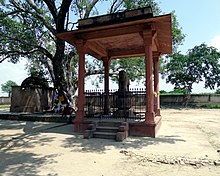
The Sankissa elephant under a protective roof.
 https://upload.wikimedia.org/wikipedia/commons/thumb/e/e2/Elephant_capital_Sankasya.jpg/642px-Elephant_capital_Sankasya.jpg
https://upload.wikimedia.org/wikipedia/commons/thumb/e/e2/Elephant_capital_Sankasya.jpg/642px-Elephant_capital_Sankasya.jpg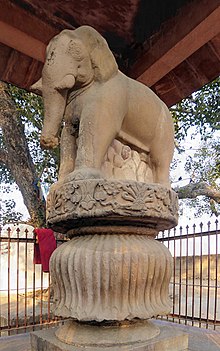
Possible reconstitution of the elephant.
 https://upload.wikimedia.org/wikipedia/commons/7/70/Mahabodhi_pillar_of_Ashoka.jpg
https://upload.wikimedia.org/wikipedia/commons/7/70/Mahabodhi_pillar_of_Ashoka.jpg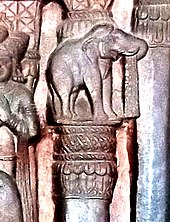
The Bodh Gaya Mahabodhi Temple pilar,
another Ashokan elephant pillar,
portrayed in a Bharhut relief, 100 BCE.
A shrine was erected on the spot where the Buddha's right foot first touched the ground at Sankissa.[10]
When the Chinese pilgrims, Xuanzang and Faxian, visited the place,
they found three ladders,
which had been built of brick
and stone by the ancients,
to commemorate the Buddha's descent,
but the ladders were nearly sunk in the earth.[11][12]
There was, in the Buddha's time,
a deer park at Sankissa where Suhemanta Thera heard the Buddha preach.[13]
During the Vajjiputta controversy, Revata Thera,
on his way from Soreyya to Sahajati, went through Sankissa.
The road he took passed through Sankissa, Kannakujja, Udumbara and Aggalapura.[14]
The excavations carried out in the place did not reveal any artifacts of importance.
An elephant capital from the period of the Mauryas was found at the site.[15]
 https://upload.wikimedia.org/wikipedia/commons/thumb/3/36/Geographical_spread_of_known_Ashoka_Capitals_in_India.jpg/1022px-Geographical_spread_of_known_Ashoka_Capitals_in_India.jpg
https://upload.wikimedia.org/wikipedia/commons/thumb/3/36/Geographical_spread_of_known_Ashoka_Capitals_in_India.jpg/1022px-Geographical_spread_of_known_Ashoka_Capitals_in_India.jpgGeographical spread of known capitals of the pillars of Ashoka.
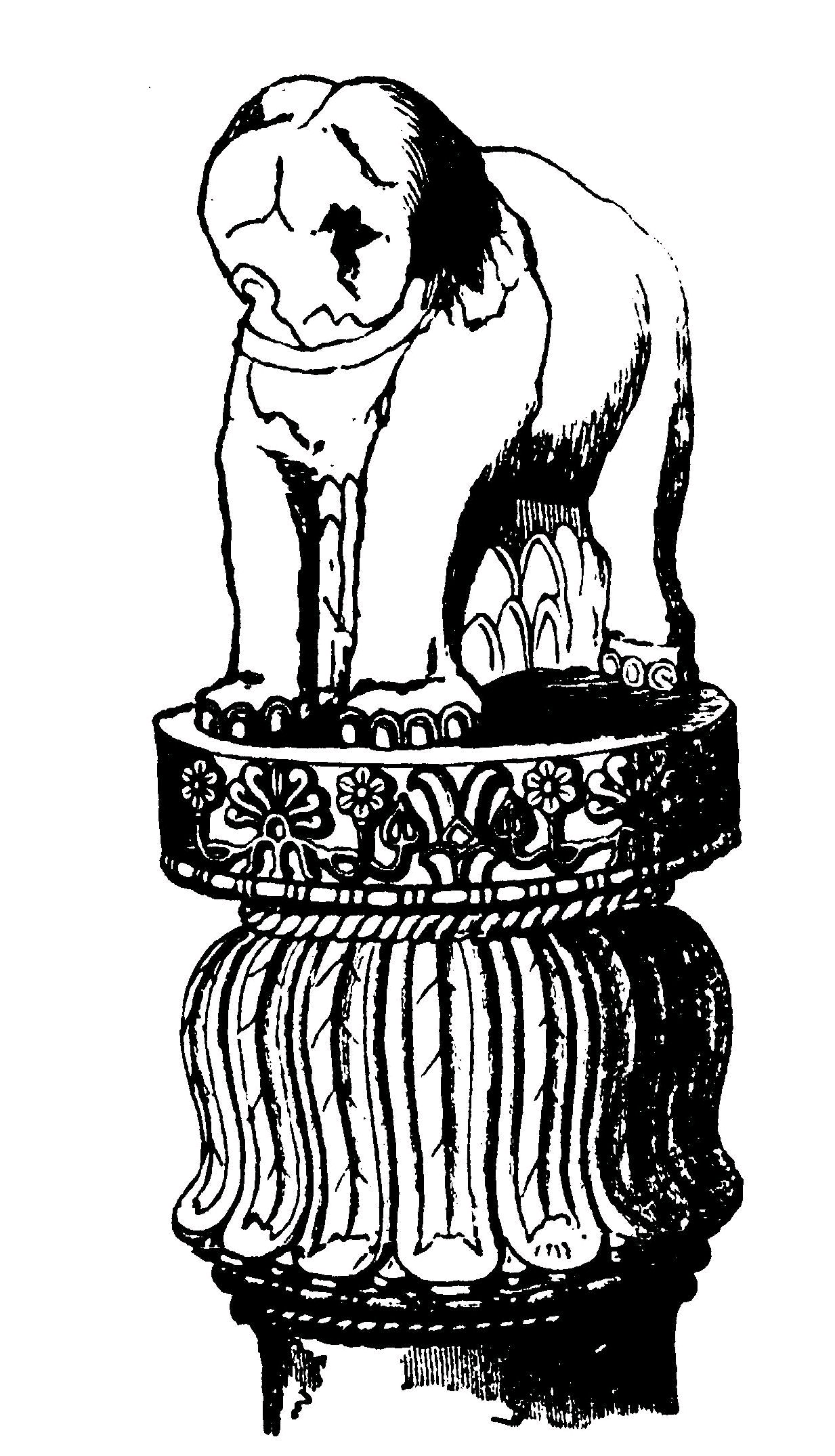 https://upload.wikimedia.org/wikipedia/commons/5/52/Sankissa_elephant_drawing.jpg
https://upload.wikimedia.org/wikipedia/commons/5/52/Sankissa_elephant_drawing.jpg
Sankissa elephant (drawing).
 https://upload.wikimedia.org/wikipedia/commons/thumb/5/56/Sankissa_elephant_abacus_detail.jpg/800px-Sankissa_elephant_abacus_detail.jpg
https://upload.wikimedia.org/wikipedia/commons/thumb/5/56/Sankissa_elephant_abacus_detail.jpg/800px-Sankissa_elephant_abacus_detail.jpgAbacus in hellenistico-persian style.[16]
Getting There[edit]

Map of Sankassa in relation
to other Eight Great Places Buddhist pilgrimage sites and notable nearby cities
Its about 250 km and 4 hours 30 minute
drive from Kanpur Airport
References[edit]
 Wikimedia Commons has media related to Sankissa.
Wikimedia Commons has media related to Sankissa.^ Jump up to:a b c Dhammapadatthakathā, iii, 224
^ Marshall p.56
^ cf. Visuddhi magga, p. 391
^ Jump up to:a b c Sutta Nipāta Commentary, ii, 570
^ Jātaka, ed. Fausboll, iv, 266
^ see also Jhánasodhana, Sarabhamiga, and Candábha Játakas
^ Buddhavamsa Commentary 106, 247
^ Papañca Sūdanī, Majjhima Commentary i 371
^ Jātaka, ed. Fausboll, i, 193
^ Dhammapadatthakathā, iii, 227
^ Samuel Beal, Romantic Legend of the Buddha, i, 203
^ Fa Hien, p. 24
^ Theragāthā Commentary, i, 212
^ Vinaya Pitaka, ed. Oldenberg, ii, 299f
^ Sen, Dr. A. C. (2008). Buddhist shrines in India. Kolkota: Maha Bodhi Book Agency. p. 63. ISBN 978-81-87032-78-6.
^ John Irwin, The true chronology of Ashokan Pillars [1]
External links[edit]
Entry on Sankassa in the Buddhist Dictionary of Pali Proper Names
Description of Sankasya by the Chinese pilgrim monk Faxian (399-414 AC)
Sankassa Video Documentary (in Sinhalese) Ancient Buddhist events at Sankissa
https://www.palikanon.com/english/pali_names/sa/sankassa.htm
maps.google The place where Lord Buddha show Twin Miracle (Pali:Yamaka Patihara). - Sravasti
maps.google The place where Lord Buddha came down from Daowadung. - Sankisa
show
Topics in Buddhism
Categories:
Ancient Indian cities
History of Uttar Pradesh
Buddhist pilgrimage sites in India
Places in the Ramayana
<번역 with 파파고>
산카샤
Sankissa
Sankisa

산키사의 코끼리 기둥 머리★★, 3세기 BC
capital : 기둥머리

abacus 의 세부 사항.
abacus ★★ 기둥의 상단 머리 최상부에 두어지는 네모진 판.
주로 도리아식, 이오니아식, 코린트식 건축물에 나타나며
상부에서 전해지는 하중을 균등하게
기둥머리에 전하는 기능을 한다.

인도 지도 보기
우타르프라데시
위치 인도 우타르 프라 데시 지역의 파루카바드 지역
좌표
 27°20분 02N 79°16분 16초
27°20분 02N 79°16분 16초좌표:27°20/29/29/16°/27.33389°N79.27111°E/27.33389;79.27111
형식 결산
부처의성지

네개의 주요 사이트
룸비니
보드 가야
사르나트
쿠시나가르
4개의 추가 사이트
라지기르
산카샤
Shravasti
Vaishali
기타 사이트
아마라바티
찬다바람
Devadaha
가야
카필바스투
Kesaria
카우샴비
날란다
파탈리푸트라
Pava
바라나시
이후 사이트
아산타 동굴
바라바르 동굴
Bharhut
엘로라 동굴
Lalitgiri
마투라
판다블레니 동굴
Piprahwa
푸슈파기리
라트나 기리
산치
우다야 기리
크라마시라 주
산카사는 인도의 고대 도시였다.
그 도시는 석가 시대에 유명해 졌다.
불교의 한 자료에 따르면,
사바티에서 30개의 리그가 있었다고 한다[1].
가우타마 불상의
마하파리니에르바나 왕이 이곳을 개발해 아소카 왕의 유명한 기둥 중 하나를 도시에 설치한 후
코끼리의 수도가 살아 있는 곳이다.
그는 또한 부처의 방문을 기념하는 탑과 절을 지었다.
이 절은 오늘날까지도 존재하며
탑의 잔해는 비샤리 데비 사원으로도 남아 있다.
비사하리 데비라는 이름은 부처의 어머니에게 붙여진 것이라고 합니다.

산키사에 있는 트라야스 트림사 하벤에서 나온 부처의 유래[2].
현재 이곳에는 오래 된 유적과 불교 기념물들이 남아 있다.
순례자들은 가기도 힘들고 시설도 많지 않아 방문하는 경우가 드물다.
오랜 시간 후에 알렉산더 커닝햄이 1842년에 그 장소를 발견했습니다.
87년 후, 아나가리카 다라마팔라 경은 정신적인 탐구를 위해 이곳에 왔습니다.
1957년 판디타 마다바비타 위제소마 테로는
몇년간 산키사에 와서
가난한 사람들을 위한 불교 학교를 설립했다.
산키사는 현재 인도 우타프라데시주 파르카하바드 구역의 캄필과
칸나지 사이의 이크쿠마티 강의 북쪽 기슭에 있는 산키사 바산타푸라와 동일시 되어 있다.
내용물
1라마야나 시대의 산키사
2산카사에서의 고대 불교 행사
3건축
4가는 길
5참조
6외부 링크
라마야나 시대의 산키사[편집]
그것은 산카시야 나가르로 알려져 있고,
쿠샤드와자 왕에 의해 통치되었고,
시타의 아버지, 라마야나의 여주인공 그리고 라마 왕의 아내였습니다.
한때 산카시야 나가르의 사악한 왕 수다나 바는
자나카에게 시타의 손을 요구한다.
전쟁이 발발하면 자나카는 패배하고 수다나바를 죽일 수도 있다.
그는 산카시야 왕국을 쿠샤드와자에게 맡긴다.
산카사에서의 고대 불교 행사[편집]
산키사는 고대 주석에 기록된 진술과 주장 및 tipitaka [대장경]으로부터 명성을 얻었다.
그러나 Tipitaka자체에서는 Sankissa에서 일어날 것으로 예상되는 사건들은 전혀 언급되지 않았다.
산키사에서 부처님이 타바팀사에 있는 아비드함 마피타카를 설교한 후
간담바 나무 아래서 쌍둥이 기적의 공연에 이어 다시 지상으로 돌아오셨다.
부처가 타바팀사를 떠날 시간이 다가오자,
모갈라나는 쿠야 아나타 핀디카가 [3]준 사바티에서 기다리던 군중에게 돌아온다고 발표했다.
그리고 나서 그들은 산키사로 갔다.
부처의 후예가 마하파바라나 축제 날에 일어났다.
사마는 시네루에서 지상으로 부처가 내려올 수 있는 세개의 사다리를 제공하고 있다.
오른쪽에는 신들을 위한 금 사다리가,
왼쪽에는 마하 브라마와 그의 망막용 은 사다리가,
가운데에는 부처를 위한 보석 사다리가 있다.
모인 사람들은 30개의 리그를 돌며 지구를 뒤덮었다.
그 위의 아홉개의 브라마 세계와
그 아래의 아비치 세계에 대한 명확한 전망이 있었다.
부처는 파냐시카, 마탈리, 마하라 브라흐마, 수야마를 동반했다.
사리푸타는 그를 처음으로 환영했다.
(업팔라바나가 뒤를 이[4]었고, 부처는 율법을 설교했는데,
그것은 번데기조차 이해할 수 있는 것에서 시작하여
부처만이 이해할 수 있는 것으로 끝을 맺었다.
이 때에, 파로사하사 야타카 왕이 군중들에게 사리푸타의 비할 데 없는 지혜를 선포하라고 선포하였다[1][4].
부처가 산키사로 내려온 것은 말라나가 아이다 호에서 그의 명성을 보여 줄 기회를 주었고,
아누르두다는 디바카 쿠로, 푸나에서 설교 기술을 보여 주었고,
부처는 사리푸타에게 지혜를 발휘할 기회를 주고 싶어 했다고 한다[1][4][5][6].
그래서 그는 아무도 답할 수 없는 사리푸타의 질문에 대해 물었다.
사리푸타 수타의 서두 단어는 투시타의 후손을 가리키는 것으로 되어 있다.
산키사 성문이 있는 곳은 세계에서 ' 바꿀 수 없는 '곳 중 하나이다.
모든 부처님들은 아비 하마를 설교한 후에 인간의 세계로 내려온다[7][8].
산키사에서 제타바나로 갔다[9].

바르후트에 있는 산키사로 하강하라.

간다라의 그레코-
Buddhist art of the Gandhara.
산키사로 하강합니다.

2세기 CE
Mathura의 천국에서 유래.

산키사의 불상전
건축[편집]

산키사 코끼리는 보호용 지붕 아래에 있다.

코끼리가 다시 태어날 가능성이 있습니다.

보드 야드 가야마하보디 사원은
또 다른 아소칸 코끼리 기둥으로
기원전 100년 바르후트의 부조에서 묘사되었다.
산키사에 부처의 오른 발이 땅에 닿은 곳에 사당이 세워졌다[10].
중국 순례자인 쉬안장과 파시안이 이곳을 방문했을 때,
그들은 부처의 후예를 기념하기 위해
고대 사람들이 벽돌과 돌로 만든 사다리 세개를 발견했습니다.
하지만 사다리는 땅에 거의 가라앉을 뻔 했습니다[11][12].
부처님의 시대에 산키사에 사슴 공원이 있었는데,
그곳에서 수헤만타 테라는 부처님의 설교를 들었습니다[13].
바자푸타 분쟁 때, 소레야에서 사하자티로 가는 도중에 산키사를 거쳤다.
그가 갔던 길은 산키사, 칸나쿠자, 우담바라, 아가라푸라를 통과했다[14].
그곳에서 발굴 작업을 했지만 중요한 유물은 발견되지 않았다.
마우리아 시대의 코끼리의 수도가 그 장소에서 발견되었다[15].

아소카의 기둥으로 알려진 알려진 수도의 지리적 분포.

산키사 코끼리.

헬레니즘-페르시아 스타일의 아바쿠스[16].
가는 길[편집]

다른 8대 대성당/불교 성지 성지 및 주변의 유명한 도시들과 관련된 산카사 지도
칸푸르 공항에서 차로 250km, 4시간 30분 정도 걸린다.
참조[편집]
 위키 미디어 커먼즈는 산키사와 관련된 매체를 가지고 있다.
위키 미디어 커먼즈는 산키사와 관련된 매체를 가지고 있다.^위로 이동abc: 다암마파다타카타, iii, 224
^ 마셜 p56
^ 비수다치 마가, 페이지 391
^위로 이동abc: 수타 니파타 코벤타리, ii, 570
^ 야타카, 에드 파우스볼, iv, 266
^ 또한 자나 소다나, 사라바미가, 칸다바브야 자타카스를 참조하십시오.
^ 불교 용어 106,247
^ 파파냐 카수단 3, 마자히마 코벤타리 1호
^ 야타카, 에드 파우스볼, i, 193
^ 다 마파다타카타, iii, 227
^ SamuelBeal, 부처의 낭만적인 전설, i, 203
^ 페이엔, 페이지 24
^ Theraga-laCommentary, i, 212
^ 교육 받은 비나야 피타카 올덴 버그, ii, 298K
^ Sen, Dr. A. C. (2008). Buddhist shrines in India. Kolkota: Maha Bodhi Book Agency. p. 63. ISBN 978-81-87032-78-6.
^ 요한 어윈의 연대기, 아소칸 피야르[1]
외부 링크[편집]
불교 용어 사전 산카사의 표제어
중국 순례자 파시안(399-414교류)의 산카시야에 대한 설명
Sankassa비디오 문서(신할레스) 산키사에서 있었던 고대 불교 행사
https://www.palikanon.com/english/pali_names/sa/sankassa.htm
Maps.Google부처님이 쌍둥이 기적을 보여 주는 장소. 야마카 파티하라) -스라바스티
maps.Google부처님이 다우다둥에서 내려오신 곳.-산키사
범주:
● From 대만불광사전
승가시국
【僧伽施國】 p5721-下≫
僧伽施,
梵名 Sāṃkāśya,
Saṃkāśya,
巴利名 Saṃkassa.
係位於中印度恆河流域之古國.
又作
僧伽尸沙國,
僧迦施國,
僧迦奢國,
僧迦舍國,
僧柯奢國,
桑迦尸國.
別稱劫比他國(巴 Kapitha),
泥口縛襪多國(梵 Devāvatāra).
高僧法顯傳(大五一․
八五九下,
八六○上) : 「從此東南行十八由延,
有國名僧迦施.
佛上忉利天三月爲母說法來下處,
(中略)此處僧及尼可有千人,
皆同衆食,
雜大小乘學.」此外,
另於大唐西域記卷四載,
此國周圍二千餘里,
國大都城周長二十餘里,
氣序土宜與毘羅那拏國大致相同,
風俗淳和,
人多學藝,
有伽藍四所,
僧徒千餘人,
竝學小乘正量部法.
天祠十所,
異道雜居,
共同遵事大自在天.
高僧法顯傳等又載,
此處有佛從忉利天至人間時洗浴之舊址,
優鉢羅比丘尼初禮佛之處,
過去三佛及釋尊坐處經行處,
天帝釋及梵天王隨佛從天下來之地,
及收藏佛髮,
爪等之塔等.
關於都城位置,
康林罕(Cunningham)謂,
卽恆河上流南岸阿特蘭基(Atranji)與卡諾基(Kanoj)中間之桑開薩(Sankisa);華特士(Watters)與戴伊(Dey)等學者亦贊同此說,
然英國印度學學者史密斯(Smith)卻否定此說,
而認爲應卽埃坦(Ītā,
或 Etah)地方東北隅之皮堤亞利(Pitiālī)附近.
[雜阿含經卷十九,
阿育王經卷三,
阿育王傳卷二,
解說西域記,
A.
Cunningham: Ancient Geography of India;T.
Watters: On Yuan Chwang; S.
Beal: Buddhist Records of the Western World;N.L.
Dey: The Geographical Dictionary of Ancient and Mediaeval India]
⑥-5721■불광사전
hbfl--07_Sa_0901.TIF
■ '승가시국' 관련 기타 참고 사전 통합 검색 ★★
다음백과 https://100.daum.net/search/entry?q=승가시국
네이버백과 https://terms.naver.com/search.nhn?query=승가시국
한국위키 https://ko.wikipedia.org/wiki/승가시국
네이버한자 https://hanja.naver.com/search?query=승가시국
네이버지식 https://kin.naver.com/search/list.nhn?query=승가시국
네이버사전 https://endic.naver.com/search.nhn?sLn=kr&isOnlyViewEE=N&query=승가시국
위키영문 https://en.wikipedia.org/wiki/dāna
구글 https://www.google.co.kr/?gws_rd=ssl#newwindow=1&q=승가시국
네이버 https://search.naver.com/search.naver?where=nexearch&query=승가시국
다음 https://search.daum.net/search?w=tot&q=승가시국
--- 이하 단어 직접 입력 검색 ---
운허 동국역경원 불교사전 https://abc.dongguk.edu/ebti/c3/sub1.jsp
불광대사전(佛光大辭典) https://www.fgs.org.tw/fgs_book/fgs_drser.aspx
산스크리트어사전 https://www.sanskrit-lexicon.uni-koeln.de/monier/
티벳어사전 https://nitartha.pythonanywhere.com/index
● [pt op tr] fr
_M#]
■ 불교사전 링크 및 불교 사전 출처 종합 안내
https://buddhism0077.blogspot.com/2020/04/blog-post_21.html
●● 관련정보 사용페이지
구글 아름다운 풍광 페이지
상세정보=> https://buddhism007.tistory.com/3858
----[‡사용한 다른 페이지]---
◆vpzf8947
| ◈Lab value 불기2564/06/07/일/19:47 |
♥잡담♥ MANU CHAO - La Vida Tombola  ○ 2016_1008_131012_can_exc.jpg 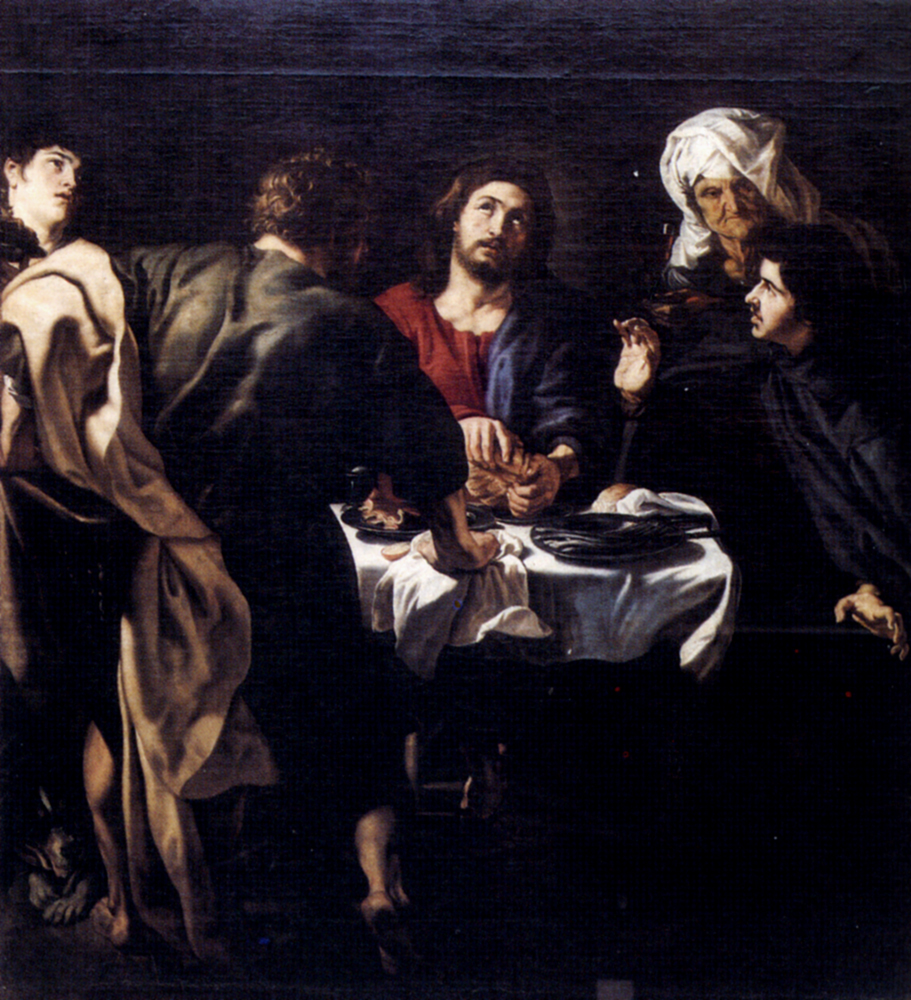 ○ [pt op tr] 예술작품 사진 공양, 나무불, 나무법, 나무승 Peter-Paul-Rubens-the-supper-at-emmaus [#M_▶더보기|◀접기| Artist: Peter-Paul-Rubens https://en.wikipedia.org/wiki/Peter_Paul_Rubens Title : the-supper-at-emmaus Info Permission & Licensing : Wikiart ● [pt op tr] fr _M#]  ○ 2018_0418_121719_can.jpg ○ [pt op tr] 꽃 공양, 나무불, 나무법, 나무승  ○ [pt op tr] 아름다운 사진 공양, 나무불, 나무법, 나무승 Lemsalu_linnus_6 [#M_▶더보기|◀접기| Eesti: Säilinud keldriruumid konvendihoone väravatorni kõrval. Author Marrx Permission & Licensing : Wikipedia ● [pt op tr] fr _M#] ♡Sankasia , Sankissa 및 Sankasya  ○ 아름다운 풍경사진 공양, 나무불, 나무법, 나무승 With the image : Wikipedia ○상세정보=> https://buddhism007.tistory.com/3858 |
| 문서정보
ori
https://buddhism0077.blogspot.com/2020/06/sankasia.html#8947 sfx--dict/승가시국.txt sfd8--불교용어dic_2564_06.txt ☞◆vpzf8947 불기2564-06-07 θθ |
ॐ मणि पद्मे हूँ
○ [pt op tr]
[#M_▶더보기|◀접기|
■ 음악
Pierre Bachelet - On Ne Prends Pas Le Temps D'aimer
FLORENT PAGNY - Chanter
Jeane Manson - Fly To New York City
Charles Aznavour - The Needle (L'aiguille)
Pascal Laffarge - Tue-Moi
Marie-Paule Belle - Madame
■ 시사, 퀴즈, 유머
뉴스
퀴즈
퀴즈2
유머
■ 한자 파자 넌센스 퀴즈
【 】 ⇄✙➠
일본어글자-발음
중국어글자-발음
■ 영어단어 넌센스퀴즈- 예문 자신상황에 맞게 바꿔 짧은글짓기
■ 번역퀴즈
번역
■ 영-중-일-범-팔-불어 관련-퀴즈
[wiki-bud] Yoga
[san-chn] bāhyam 外
[san-eng] ijyayā $ 범어 by worśip
[pali-chn] suññataṃ avagāhati 通達空
[pal-eng] kha.n.daphulla $ 팔리어 nt.broken and shattered portions (of a building).
[Eng-Ch-Eng] 四種涅槃 'Four kinds of Nirva^na.' In the teachings of the Yoga^ca^ra school, nirva^na is divided into four types. The first is the nirva^na of the originally pure self-nature, the original thusness of all existence. The second refers to the thusness expressed in the extinction of the hindrances due to defilement, and is called "nirva^na with remainder." The third is "nirva^na without remainder"; in this nirva^na the hindrances due to defilement in the mind are cut off, and the body in which the five skandhas was united is extinguished. In the fourth, both the hindrances due to defilement and the hindrances of knowing are cut off, and a deep wisdom is attained wherein sam!sa^ra and nirva^na are not distinguished. Not abiding in nirva^na nor disliking sam!sa^ra, one teaches sentient beings yet does not become attached to the world. This condition of complete separation from delusion is called "nirva^na with no abode."
[Muller-jpn-Eng] 覺親 カクシン (person) Buddhamitra
[Glossary_of_Buddhism-Eng] BUDDHACARITA☞See: Buddha Carita.
[fra-eng] vice $ 불어 vice
■ 다라니퀴즈
자비주 3 번째는?
성관자재보살 명호 51 번째는?
3
수명을 얻게 하기 위함이며,
● 바로기제새바라야 婆盧羯帝爍鉢囉耶<三> va lo ki te ś va rā ya
『불설천수천안관세음보살광대원만무애대비심다라니경』
♣0294-001♧
51
미싣뎨 라나 라라 다
尾悉諦<二合>囉拏<二合>羅羅<引>咤<五十一>
『성관자재보살일백팔명경』
♣1122-001♧
■ 삼매_게송퀴즈
■ 오늘의 게송
[159일째]
불가설해념념중 $ 030■ ■不 一於於或其 彼周彼所清
030▲ 毘婆訶毘婆訶為 一 ● 毘薄底, ○□□□□,顯,示,常,一
□□□□□□□, 顯了真諦不可說,
示現未來一切佛, 常演說法無窮盡。
□□□□□□□, 현료진체불가설,
시현미래일체불, 상연설법무궁진。
말할 수 없는 지혜 생각 가운데
분명한 참된 이치 말할 수 없고
오는 세상 나타나실 여러 부처님
법문을 연설하심 끝이 없으며
[160째]
일일불법불가설 $ 031▲毘薄底毘薄底為 一 ● 毘佉擔, ○□□□□,種,出,轉,於
□□□□□□□, 種種清淨不可說,
出妙音聲不可說, 轉正法輪不可說。
□□□□□□□, 종종청정불가설,
출묘음성불가설, 전정법륜불가설。
하나하나 부처님 법 말할 수 없고
가지가지 청정함도 말할 수 없고
미묘하게 내는 음성 말할 수 없고
법 바퀴 굴리는 것 말할 수 없어
●K0152_T0674.txt★ ∴≪A증계대승경≫_≪K0152≫_≪T0674≫
●K0649_T0125.txt★ ∴≪A증일아함경≫_≪K0649≫_≪T0125≫
●K1198_T1372.txt★ ∴≪A증혜다라니경≫_≪K1198≫_≪T1372≫
법수_암기방안
30 발목 [ankle]
31 넓적다리 thigh
3 밥통 【위】
51 눈썹 아이부러워eyebrow 眉 【미】
■ 용어퀴즈 다음 설명에 맞는 답을 찾으시오.
■ 용어 퀴즈
9품 왕생의 하나. 또는 중중품(中中品). 하루 동안 계를 지킨 소승하선(小乘下善)의 범부가 죽을 때에 불보살의 내영(來迎)을 받고 정토에 왕생하여 반겁(半劫)을 지낸 뒤 아라한과를 얻는 것.
답 후보
● 중품중생(中品中生)
증상만(增上慢)
증익(增益)
지견(知見)
지광(智光)
지말법륜(枝末法輪)
지옥변상(地獄變相)
● [pt op tr] fr
_M#]
○ [pt op tr]
● 승가시국 [문서정보]- 불교용어풀이 키워드
[#M_▶더보기|◀접기|
[관련키워드]
승가시국,산카샤Sankassa,산카시아Sankasia,산키사Sankissa,산카시Sankasy,
[링크용타이틀]
승가시국,산카샤,산카시아,산키사,산카시
https://blog.naver.com/thebest007/221993586007
■ 본 페이지 ID 정보
DICT--승가시국
https://buddhism0077.blogspot.com/2020/06/sankasia.html
sfx--dict/승가시국.txt
sfd8--불교용어dic_2564_06.txt ☞◆vpzf8947
불기2564-06-07
https://buddhism007.tistory.com/17284
htmback--승가시국_불기2564-06-07-Tis.htm
● [pt op tr] fr _M#]

댓글 없음:
댓글 쓰기
What do you think is the most important?
Do you know why this is the most important?